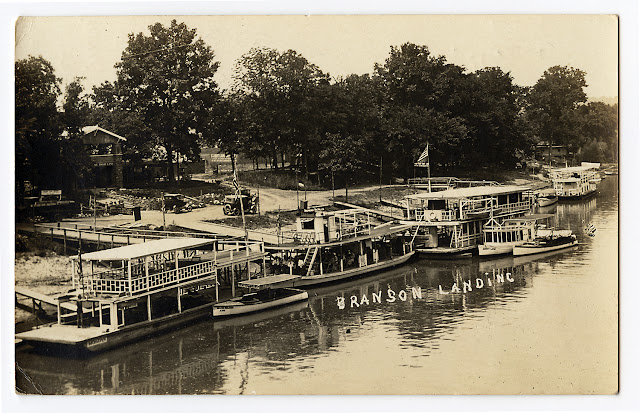Real photo postcard, c. 1925
Before the construction of the run-of-the-river hydroelectric Powersite Dam on the White River near Forsythe, float fishing was the primary sporting attraction for the Shepherd of the Hills Country. Lake Taneycomo, which filled in 1913, didn’t eliminate the celebrated Galena-to-Branson float, but it gave Branson and Hollister an advantage over Galena. The small lake was more compatible with larger, motorized watercraft than the shallow flowing James and White rivers in their native state. By the mid-1920s the shoreline at Branson Landing was filled with larger motorized tour boats and smaller cruisers.
The times - and Branson- are a-changin'! This shows just how different life a hundred years ago was in Branson. Motorized tour boats accommodated auto-delivered tourist who came to sightsee, not fish, float or commune with nature. Lake Taneycomo was compatible with Arcadianism but it opened the door to mass tourism. Today Branson Landing is a big modern shopping center, showing few traces of this earlier era.
COMING IN 2017: JAMES FORK OF THE WHITE: Transformation of an Ozark River.
Sample pages from this new book can be seen at www.beautifulozarks.com
Our earlier 'river book,' DAMMING THE OSAGE, can be seen at www.dammingtheosage.com



